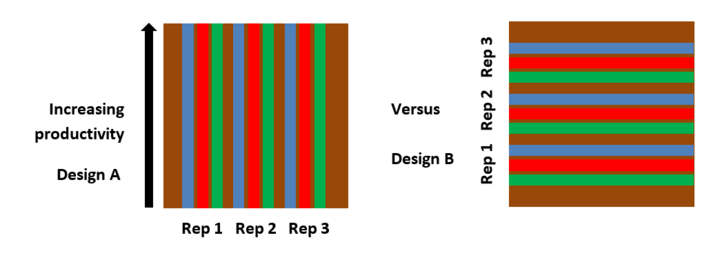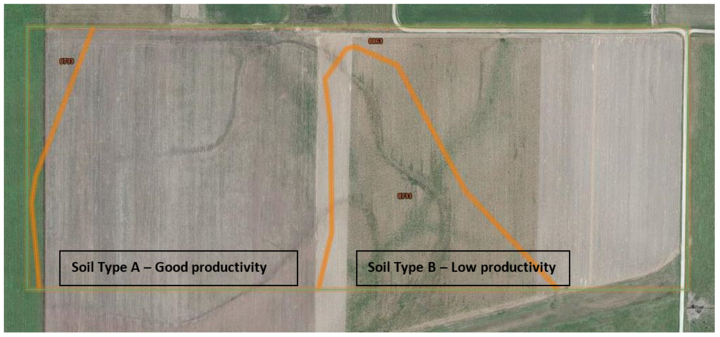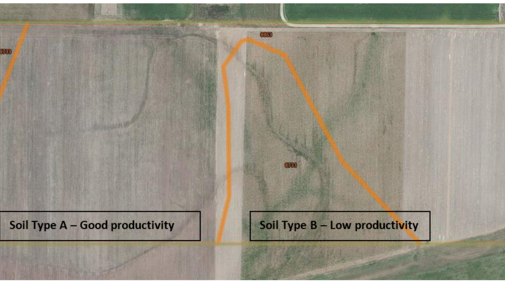Higher yields, greater efficiency, reduced environmental impact! This may sound like a used-car dealership sales pitch, but it could represent the objectives that make an operation sustainable. Increasingly, farmers are generating on-farm research data that encompass a wide range of practical topics. Setting up these experiments so the data will be statistically valid takes planning.
Selecting a Research Topic
The first step in setting up an on-farm trial is choosing a topic of interest, one that is not too complex. For example, a producer may be interested in how corn hybrids react with increasing rates of fertilizer at different planting populations and planting dates. While this sounds like an interesting experiment, the complexity is simply too great for an on-farm trial. With three options for each factor (e.g., three hybrids, three rates, etc.) there would be 81 treatment combinations in a single replication. In this case choosing one of the factors (e.g., plant population) to study would be recommended.
This is the second of a four-part series on agricultural research and interpretation by university extension educators in the North Central Region Advanced Crops Academy. Also see:- Field Studies: Replicated Comparisons vs Side-by-Side Comparisons
- Field Studies: What do you Mean 5 Bushels Per Acre is not Significant?
- Field Studies: Blowing the Whistle on Marketing Claims
Selecting a Research Site
The next step is to choose an area of a field with limited variability. To successfully do this, prior knowledge of the field is a must. Laying out an experiment in an area of a field with preexisting variability weakens the data generated from the experiment. The underlying variability could make it almost impossible to detect treatment differences if they exist. If variability in the field is not accounted for, you wouldn’t be able to tell whether any yield differences were due to differences in soil type, drainage, etc., or the treatment. However, if a field has a uniform pattern (e.g., increasing productivity north to south), laying out the plots so the treatments follow this pattern is acceptable.

As discussed in our previous article (Replicated Comparisons vs. Side-by-Side Comparisons), replication and randomization of treatments within a replication is vital. Replication and randomization help you determine if any differences you see might be due to chance, error, or variability you can’t account for. The actual experimental design will depend on the variables to be studied. Thankfully, Extension personnel in your state will likely be able to help set up your experiment.
Figure 2 shows a 36-acre field example taken from the USDA NRCS Web Soil Survey. This field has two soil types; many fields across the North Central Region have much more variability than this. Soil type A is a fairly productive silt loam while soil type B is a much less productive silty clay loam. If the field was simply split vertically down the middle into two treatments, the results would be misleading. However, if treatments were laid out in replicated blocks running from left to right, the variability would be nearly equally distributed across treatments, making for a valid comparison.

Summary
On-farm research can be a valuable tool for farmers. As new products and technology emerge in our ever-changing field, new questions and methods arise. Considering the current economics of production agriculture, producers are finding more value in answering questions using on-farm research methods in their own fields. Choosing a topic of interest, setting up the test on a uniform field area, and using proper experimental design and replication are key parts of a successful on-farm experiment. Following these steps can greatly assist in generating broadly applicable data. If you have interest in doing research on your farm, contact your local extension office.

